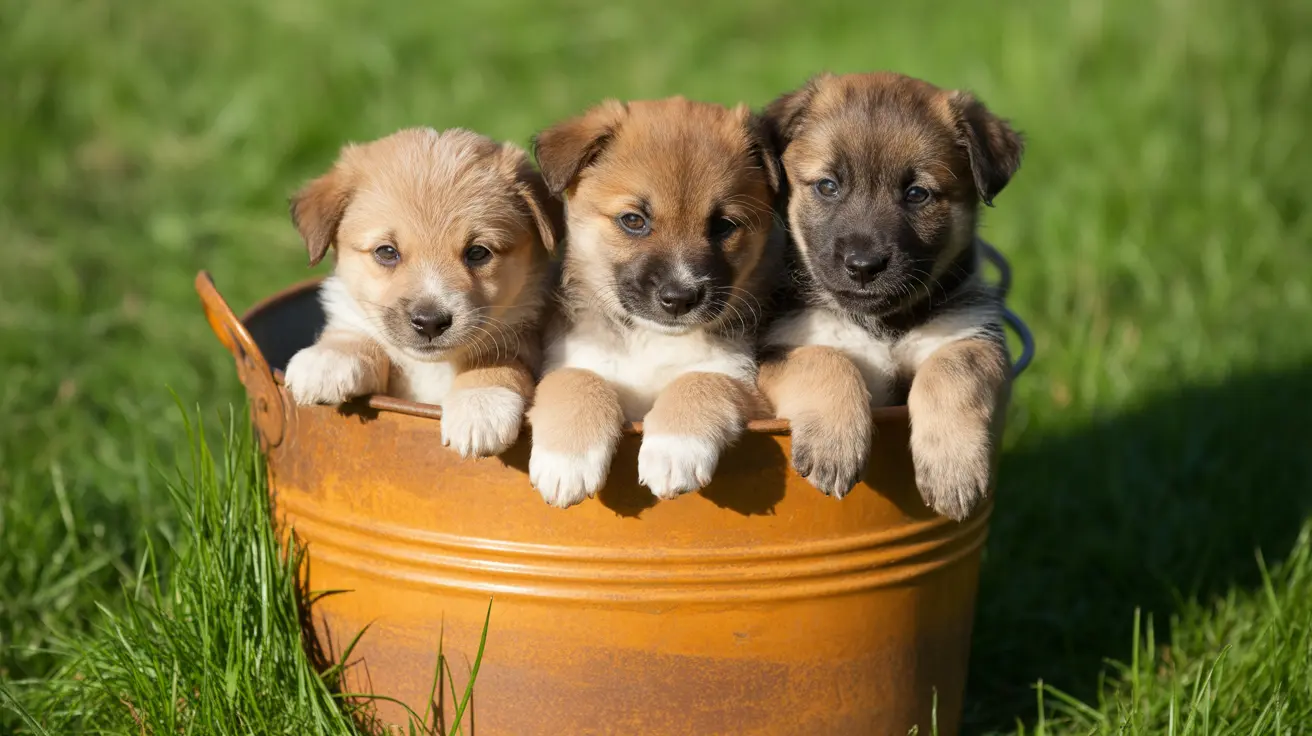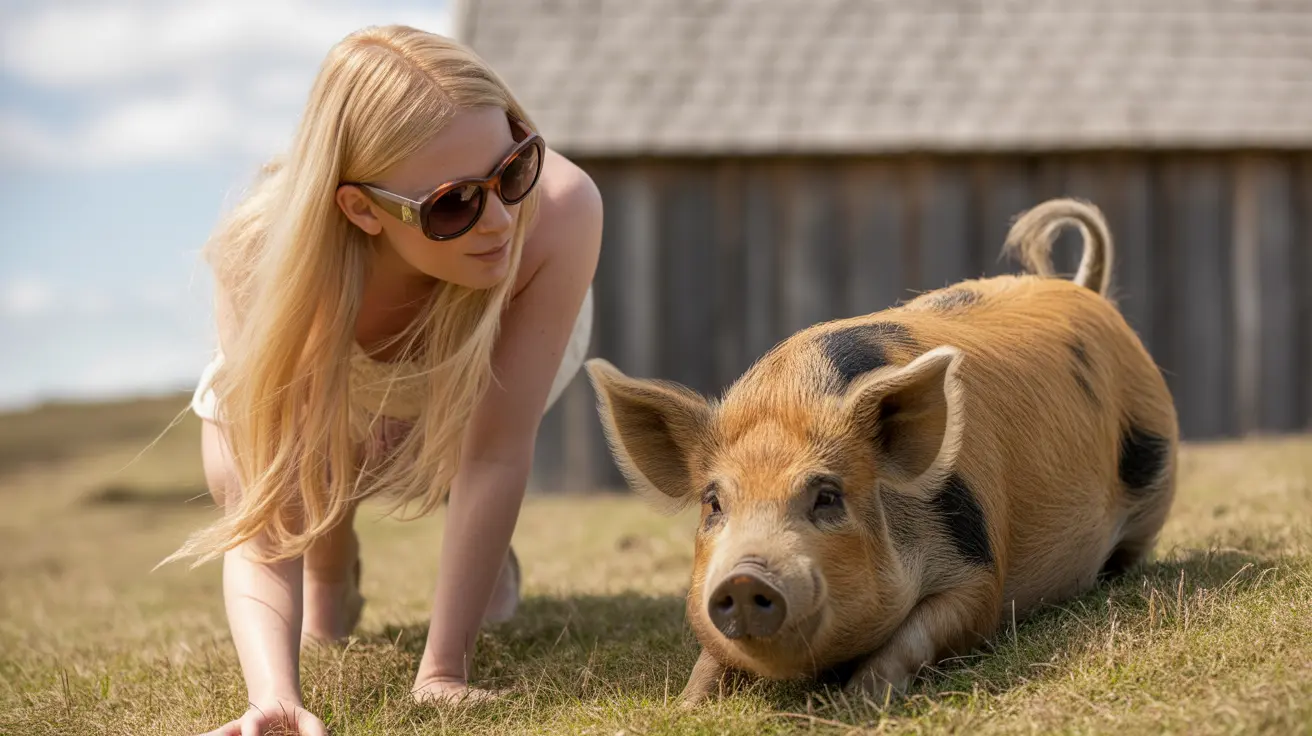Can Dogs Get Poison Ivy? Understanding Risks and Prevention
If you love hiking or spending time outdoors with your dog, you might wonder whether your furry companion can suffer from poison ivy. While most people know to avoid the infamous "leaves of three," the risk for dogs is less obvious. Let's explore how poison ivy affects dogs, what symptoms to watch for, and how to keep both you and your pet safe.
What Is Poison Ivy?
Poison ivy is a plant that's easy to recognize once you know what to look for: three glossy, almond-shaped leaves with a red stem. It grows as either a bush or a vine and changes color with the seasons—green in summer, turning red or orange in fall. You'll find it in most parts of North America except Alaska, Hawaii, and some West Coast areas.
The trouble comes from an oily substance called urushiol, found in all parts of the plant: leaves, stems, roots, and even berries. This oil causes allergic reactions in many people (between half and three-quarters of us). Urushiol is stubborn—it clings to clothes, tools, and animal fur for months or even years unless properly cleaned.
How Dogs React to Poison Ivy
Here's some good news: dogs are much less likely than humans to have skin reactions to poison ivy. Their fur acts as a natural barrier that keeps urushiol off their skin. But there are exceptions:
- Short-haired or hairless breeds have less protection.
- Areas with thin or no fur (like bellies, snouts, groins) are more vulnerable.
- If your dog's belly brushes against low plants during walks, exposure increases.
If a dog does react to poison ivy, it's usually on those less-protected spots. Some breeds or individual dogs may be more sensitive than others.
Symptoms of Poison Ivy Exposure in Dogs
If your dog comes into contact with poison ivy's oil, watch for:
- Redness or swelling on exposed skin
- Itching or excessive scratching/licking
- A rash with blisters or red bumps
If your dog eats part of the plant (which is rare but possible), symptoms might include:
- Vomiting or diarrhea
- Drooling or loss of appetite
- Nausea or abdominal pain
- (In rare cases) Difficulty breathing or signs of shock
If you notice severe symptoms—especially trouble breathing—get veterinary help right away.
The Hidden Risk: Bringing Urushiol Home
The biggest risk isn't always your dog's health—it's yours! Urushiol can cling to your dog's coat after a walk through infested areas. When you pet or bathe your dog without gloves, the oil can transfer onto your skin and cause a rash days later. This means even if your dog isn't itchy, you could still end up with an uncomfortable reaction.
What To Do After Suspected Exposure
- Wear gloves before handling your dog if you think they've been near poison ivy.
- Bathe them promptly using a dog-safe shampoo (oatmeal formulas help soothe skin). Lather thoroughly and rinse well.
- Launder anything that may have touched urushiol—bedding, towels, leashes—in hot water with grease-cutting detergent.
- Clean non-washable surfaces (like floors) with rubbing alcohol; let dry before letting pets back on them.
Treating Poison Ivy Rash in Dogs
If your dog develops a rash:
- Prevent scratching/biting the area (an Elizabethan collar may help).
- Avoid home remedies unless instructed by a vet—some treatments can make things worse!
Your veterinarian might recommend steroids, antibiotics (if infection occurs), medicated shampoos, or antihistamines depending on severity. Always consult before giving any medications.
Prevention Tips for Dog Owners
- Keep dogs leashed in woods and unfamiliar places where poison ivy grows.
- Avoid known patches of "leaves of three." Teach yourself what the plant looks like in every season.
- Bathe dogs after hikes if they may have brushed against vegetation.
Never burn poison ivy plants—the smoke carries urushiol and can cause severe internal reactions if inhaled by people or pets!
The Bottom Line: Caution Keeps Everyone Safe
Your dog's risk from poison ivy is lower than yours because their fur shields most of their skin. Still, short-haired breeds and exposed areas aren't immune. More importantly, dogs can bring urushiol home on their coats—so careful handling after outdoor adventures protects everyone in the household from itchy surprises down the line. If you're ever unsure whether your dog has been exposed (or ingested any part of the plant), don't hesitate to call your veterinarian for advice.





